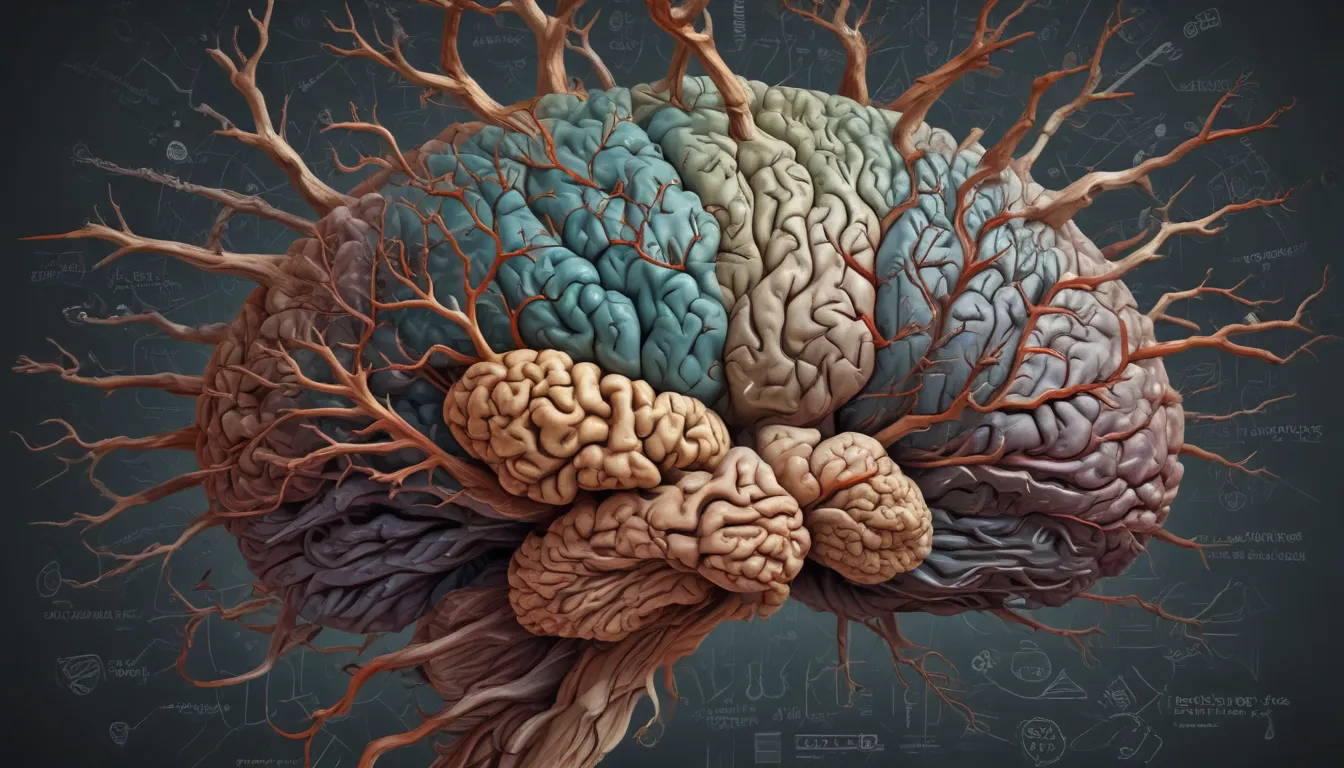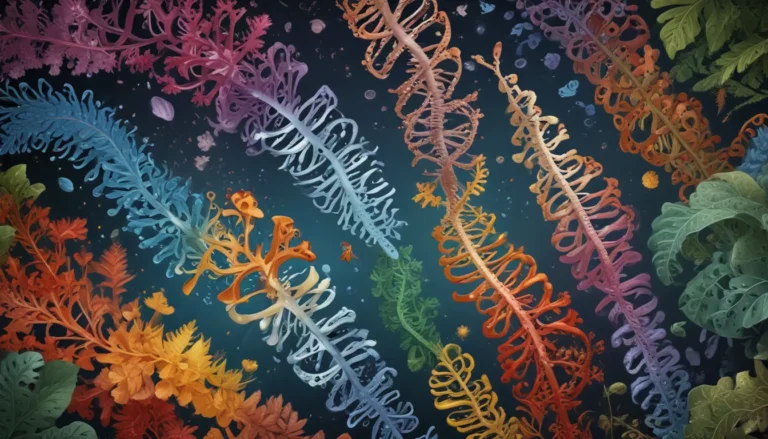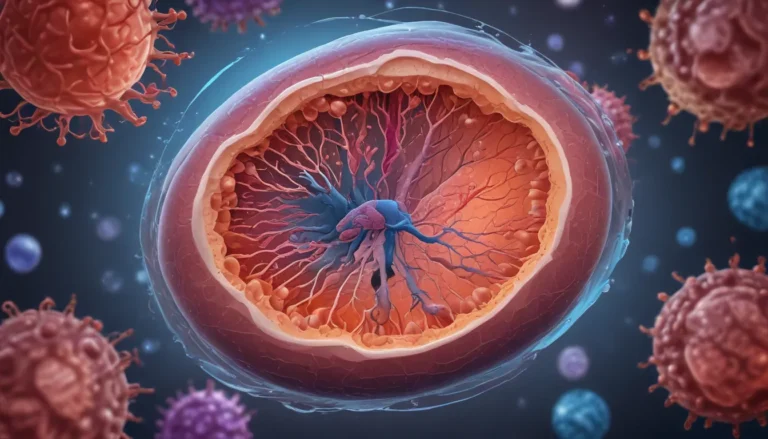A Note About Images: The images used in our articles are for illustration purposes only and may not exactly match the content. They are meant to engage readers, but the text should be relied upon for accurate information.
Are you ready to embark on a journey through the captivating realm of the cerebral cortex? This essential part of the human brain is not only responsible for higher cognitive functions but also harbors a multitude of mind-blowing secrets waiting to be unveiled. Join us as we uncover 13 fascinating facts about the cerebral cortex that will showcase its extraordinary capabilities and shed light on its intricate nature.
Unveiling the Secrets of the Cerebral Cortex
Let’s kick off our exploration of the cerebral cortex by delving into its key attributes and functions. With 16 billion neurons and six distinct layers, the cerebral cortex can be likened to a sophisticated supercomputer, adept at processing information, regulating emotions, and adapting to changes in the environment. This vital brain region serves as the control center for language, memory, and emotions, playing a pivotal role in shaping our thoughts and behaviors.
The Intricacies of Complex Connections
At the core of the cerebral cortex lies a network of approximately 16 billion neurons, each intricately connected to others to facilitate the transmission of vital information throughout the brain. These connections form the foundation of our cognitive abilities, enabling us to perceive, process, and respond to the world around us with precision and efficiency.
The Magnitude of Size
As the largest part of the human brain, the cerebral cortex commands approximately 80% of its total mass. This vast expanse of neural tissue is dedicated to executing higher-order functions such as language, reasoning, and decision-making, underscoring its critical role in shaping our intellectual capabilities.
Unraveling the Layers
Within the cerebral cortex lie six distinct layers, each endowed with a unique cellular composition and set of functions. These layers collaborate seamlessly to process and integrate information, laying the groundwork for our cognitive processes and fostering a deeper understanding of the world around us.
Embracing Efficiency Through Folding
To optimize its spatial constraints within the skull, the cerebral cortex undergoes a process known as gyrification, resulting in its characteristic wrinkled appearance. This intricate folding mechanism significantly increases the surface area of the cortex, accommodating a larger number of neurons and facilitating enhanced connectivity and information processing.
Function Localization
The cerebral cortex boasts a remarkable degree of specialization, with different regions dedicated to specific functions. For instance, the primary motor cortex governs voluntary movements, while the primary visual cortex is responsible for processing visual information. This localization of functions ensures optimal efficiency and precision in our cognitive processes.
The Adaptability of Plasticity
One of the most striking features of the cerebral cortex is its remarkable plasticity and adaptability. This property, known as neuroplasticity, enables the cortex to reorganize and adjust in response to environmental changes or injury, facilitating learning, recovery, and compensation for damaged areas.
Specialized Hemispheres
Divided into two hemispheres—the left and right—the cerebral cortex exhibits distinct specialization in various cognitive functions. While the left hemisphere is typically associated with language and analytical thinking, the right hemisphere excels in creativity and spatial awareness, highlighting the complementary roles of each hemisphere in our cognitive processes.
Sensory Processing Mastery
From vision and hearing to touch, taste, and smell, the cerebral cortex is intricately involved in processing sensory information from diverse modalities. Each region of the cortex is dedicated to interpreting specific sensory inputs, allowing us to perceive and navigate the world with extraordinary precision and depth.
Navigating Executive Functions
Nestled at the forefront of the cerebral cortex, the prefrontal cortex governs executive functions such as decision-making, planning, and impulse control. This pivotal region plays a crucial role in higher-level cognition and self-regulation, shaping our ability to navigate complex tasks and behaviors with finesse.
A Language Legacy
Within the left hemisphere of the cerebral cortex reside Broca’s area and Wernicke’s area, pivotal centers for language production and comprehension, respectively. Damage to these regions can result in significant language impairments, underscoring their indispensable role in our linguistic abilities.
The Tapestry of Memory Formation
Deep within the cerebral cortex lies the hippocampus, a key structure essential for memory formation and consolidation. Working in tandem with other cortical areas, the hippocampus stores and retrieves memories, perpetuating the intricate tapestry of our life experiences and cognitive processes.
Balancing Emotions
In the realm of emotion regulation, the cerebral cortex plays a crucial role in exerting top-down control over the amygdala, a key structure involved in emotional processing. This interplay between the prefrontal cortex and the amygdala facilitates the regulation of emotional responses, fostering emotional resilience and adaptive behaviors.
Unveiling Diversity Across Species
While the cerebral cortex reigns supreme in humans, it is also present in other mammals, exhibiting variations in size and complexity across species. This nuanced diversity underscores the paramount importance of the cerebral cortex in facilitating higher cognitive functions and adaptive behaviors throughout the animal kingdom.
In conclusion, the cerebral cortex stands as a testament to the awe-inspiring intricacies of the human brain, illuminating the remarkable capabilities that underpin our cognition, emotions, and behaviors. By unraveling the 13 captivating facts about the cerebral cortex, we gain a deeper appreciation for the profound influence of this vital brain region on our daily lives and experiences. So, next time you marvel at your ability to think, create, and engage with the world around you, take a moment to acknowledge the incredible contributions of your cerebral cortex to your cognitive prowess and cognitive vitality.
FAQs: Unveiling Insights Into the Cerebral Cortex
- What is the function of the cerebral cortex?
-
The cerebral cortex oversees a wide array of functions encompassing sensory perception, motor control, language processing, decision-making, and higher cognitive functions like memory and problem-solving.
-
How large is the cerebral cortex?
-
The cerebral cortex commands significant real estate within the human brain, accounting for approximately 80% of the total brain weight. Its outer surface spans about 2-4 millimeters in thickness, reflecting its expansive and essential role in cognitive processing.
-
How many layers comprise the cerebral cortex?
-
The cerebral cortex comprises six distinct layers, each housing diverse types of neurons and fulfilling unique roles in processing and transmitting information across neural circuits.
-
Can the cerebral cortex regenerate?
-
While the cerebral cortex lacks full regenerative capacity, certain regions of the cortex may exhibit limited plasticity, enabling partial reorganization and recovery following injury or damage.
-
Can the cerebral cortex adapt to experience?
-
Indeed, the cerebral cortex is highly adaptable, undergoing structural and functional changes in response to experiences. This phenomenon of neuroplasticity plays a pivotal role in learning, memory formation, and cognitive flexibility.
-
Does the cerebral cortex govern emotions?
-
Though not exclusively responsible for emotions, the cerebral cortex assumes a significant role in emotional processing and regulation. The prefrontal cortex, in particular, orchestrates emotional responses and decision-making processes, shaping our emotional experiences.
-
Are there variations in the cerebral cortex between individuals?
-
Yes, variations in the size and organization of the cerebral cortex can manifest among individuals, influenced by factors such as genetics, environment, and life experiences. These individual differences contribute to the unique cognitive profiles observed across diverse populations.
-
Can cognitive function be affected by cerebral cortex damage?
-
Damage to specific regions of the cerebral cortex can indeed impact cognitive functions associated with those regions. For instance, impairments in language processing may result from damage to language areas in the left hemisphere, highlighting the critical role of localized cortical regions in cognition.
-
Is the cerebral cortex exclusive to humans?
-
While the cerebral cortex is most prominent in humans, it is also present in other mammals, albeit with variations in size and complexity. This pervasive presence across species signifies the evolutionary importance of the cerebral cortex in facilitating higher cognitive functions and adaptive behaviors.
-
Are there disorders linked to the cerebral cortex?
- Indeed, several disorders can impact the cerebral cortex, including Alzheimer’s disease, Parkinson’s disease, epilepsy, and developmental disorders like autism spectrum disorder. These conditions underscore the vital role of the cerebral cortex in maintaining cognitive function and emotional regulation.
Illuminating Minds with Knowledge and Insights
Our commitment to delivering enriching and enlightening content stems from our dedication to upholding the highest standards of accuracy and engagement. With each fact contributed by our diverse community of users, we strive to offer a tapestry of insights that captivate and inform our readers. Trust in our unwavering pursuit of quality and authenticity as we embark on a journey of discovery and learning together.






